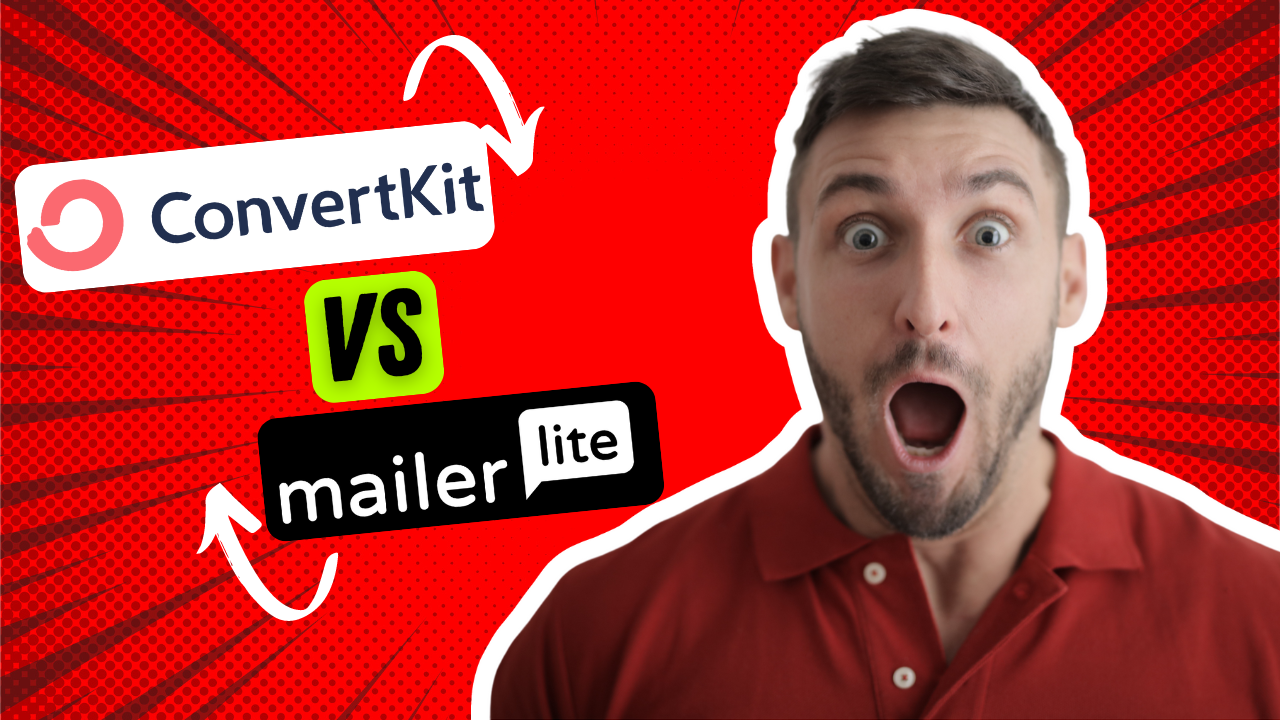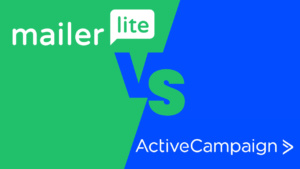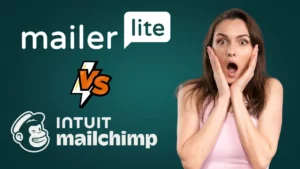Are you torn between ConvertKit vs MailerLite for your email marketing needs? If you’re on the hunt for the perfect platform to elevate your email campaigns, you’re in the right place. In this comprehensive comparison, we’ll delve into the world of ConvertKit versus MailerLite, dissecting their features, pricing, user satisfaction, and more. Whether you’re a seasoned marketer or just dipping your toes into the email marketing waters, this guide will help you make an informed decision that propels your business forward. So, let’s dive in and uncover which platform reigns supreme in the battle of ConvertKit vs MailerLite.
Table of Contents
Pricing and Plans
When it comes to picking the right email marketing platform, pricing plays a crucial role. Let’s dive into how ConvertKit vs MailerLite stack up in terms of pricing and plans.
ConvertKit: They offer a straightforward pricing structure based on the number of subscribers you have. Their plans start at $29 per month for up to 1,000 subscribers, and as your list grows, so does the price. They also offer a 14-day free trial to test the waters before committing.
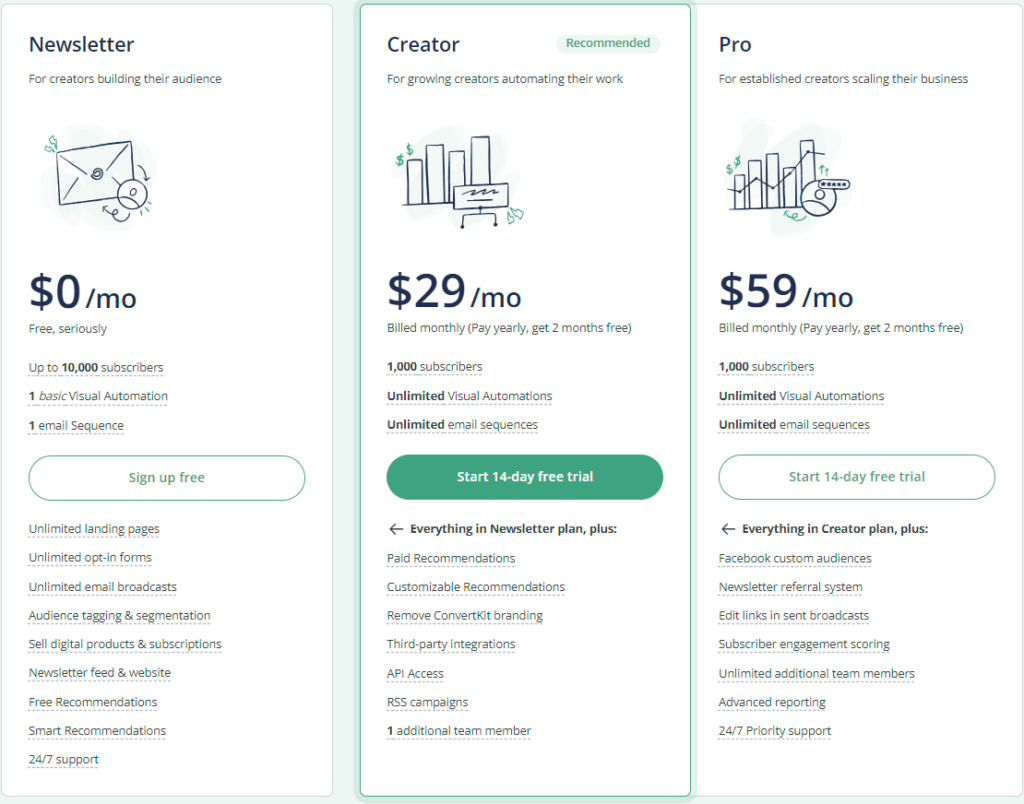
MailerLite: MailerLite, on the other hand, takes a slightly different approach. They offer a free plan for up to 1,000 subscribers, which is fantastic for those just starting out or with a small list. As your list grows, their paid plans kick in, starting at $10 per month for up to 1,000 subscribers.
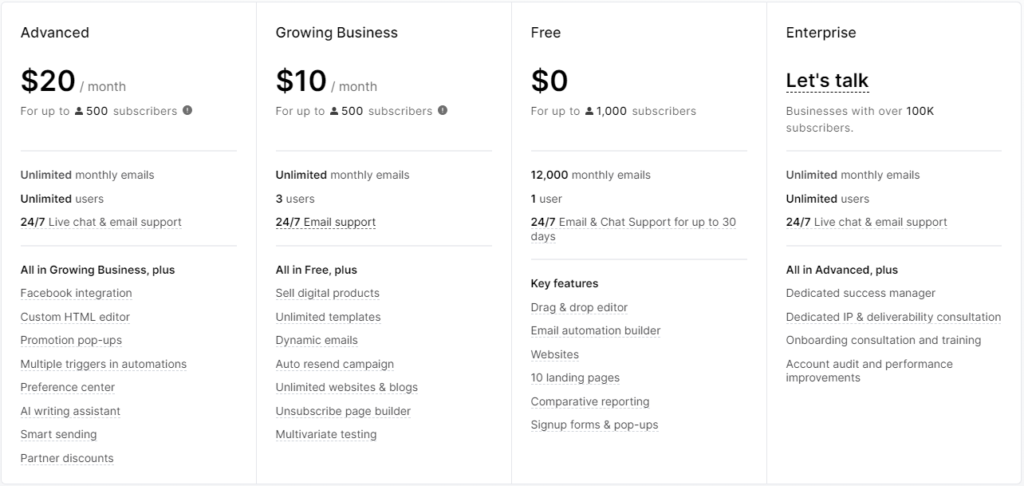
Comparison: While ConvertKit might seem a bit pricier initially, especially for larger lists, they offer robust features like automation and segmentation even on their basic plan. MailerLite, on the other hand, provides a free plan with basic features, making it a great choice for budget-conscious users.
Images: It would make sense to add images showcasing the pricing plans side by side, highlighting the differences in cost and features between ConvertKit vs MailerLite. You could also include screenshots of the pricing pages from both platforms for visual comparison. Additionally, you might consider including images of any special offers or discounts available for each platform, if applicable. These visual aids can help readers quickly grasp the pricing information and make informed decisions.
Features and Functionality
ConvertKit and MailerLite, diving into their features and functionality is like peeling back the layers of an onion – there’s a lot to uncover. Both platforms offer a plethora of tools to streamline your email marketing efforts, but let’s break it down to see which one suits your needs best.
Email Automation:
ConvertKit prides itself on its robust automation capabilities. With features like visual automation workflows, you can easily set up complex email sequences based on user behavior. Whether it’s sending out welcome emails, nurturing leads, or re-engaging inactive subscribers, ConvertKit has got you covered.
MailerLite also offers automation features, albeit with a slightly different approach. While not as visually intuitive as ConvertKit, MailerLite’s automation editor still allows you to create powerful workflows to automate your email marketing campaigns.
Landing Pages:
When it comes to creating landing pages, ConvertKit shines. Its simple drag-and-drop editor makes it easy to design stunning landing pages that convert. Plus, with built-in integrations, you can seamlessly connect your landing pages to your email campaigns for a seamless user experience.
MailerLite also offers landing page functionality, but it’s not as robust as ConvertKit’s. While you can still create beautiful landing pages with MailerLite, the editor lacks some of the advanced customization options found in ConvertKit.
Segmentation:
Segmentation is key to sending targeted and relevant emails to your subscribers. ConvertKit makes segmentation a breeze with its tagging system. You can easily tag subscribers based on their behavior, interests, or any other criteria you choose, allowing for highly personalized email campaigns.
MailerLite also offers segmentation features, allowing you to create segments based on subscriber data such as location, engagement, and more. While not as advanced as ConvertKit’s tagging system, MailerLite’s segmentation still gets the job done.
A/B Testing:
Testing is essential for optimizing your email marketing efforts, and both ConvertKit vs MailerLite offer A/B testing capabilities. Whether it’s testing subject lines, email content, or send times, you can gather valuable insights to improve your campaigns.
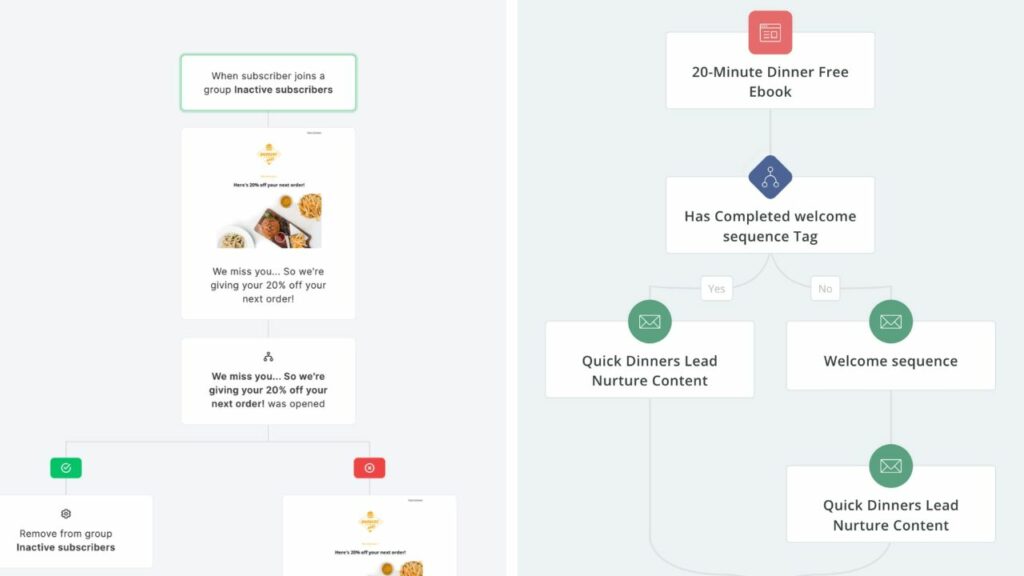
Overall, both ConvertKit vs MailerLite offer powerful features to supercharge your email marketing efforts. The key is to evaluate your specific needs and choose the platform that best aligns with your goals and budget. So, take a deep dive into their features and functionality to make an informed decision that will propel your email marketing success.
User Interface and Ease of Use
When it comes to using any software or online platform, the user interface (UI) and overall ease of use are crucial factors. Let’s dive into how ConvertKit vs MailerLite stack up in terms of their user-friendliness.
ConvertKit: ConvertKit boasts a clean and intuitive user interface that’s designed with simplicity in mind. Navigating through the platform feels like a breeze, even for beginners. The dashboard is well-organized, making it easy to find what you need without getting lost in a sea of menus and options.
One standout feature of ConvertKit’s UI is its drag-and-drop email editor. Creating visually appealing emails is a straightforward process, thanks to the intuitive editor that allows you to customize layouts and add elements with ease. Whether you’re a seasoned marketer or just starting out, you’ll find ConvertKit’s interface to be user-friendly and conducive to productivity.
MailerLite: Similarly, MailerLite prides itself on offering a user-friendly experience for its customers. The platform’s interface is clean, modern, and easy to navigate, making it a favorite among users who value simplicity.
One area where MailerLite shines is in its email editor. Like ConvertKit, MailerLite also offers a drag-and-drop editor that simplifies the process of creating engaging emails. With a wide range of customizable templates and the ability to preview your designs in real-time, MailerLite makes it easy to bring your email marketing campaigns to life.
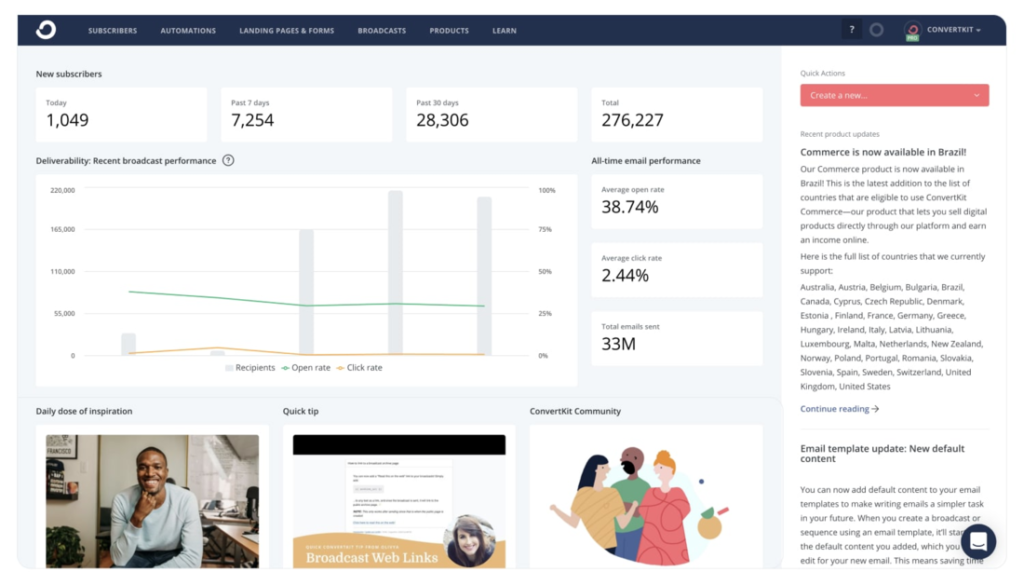
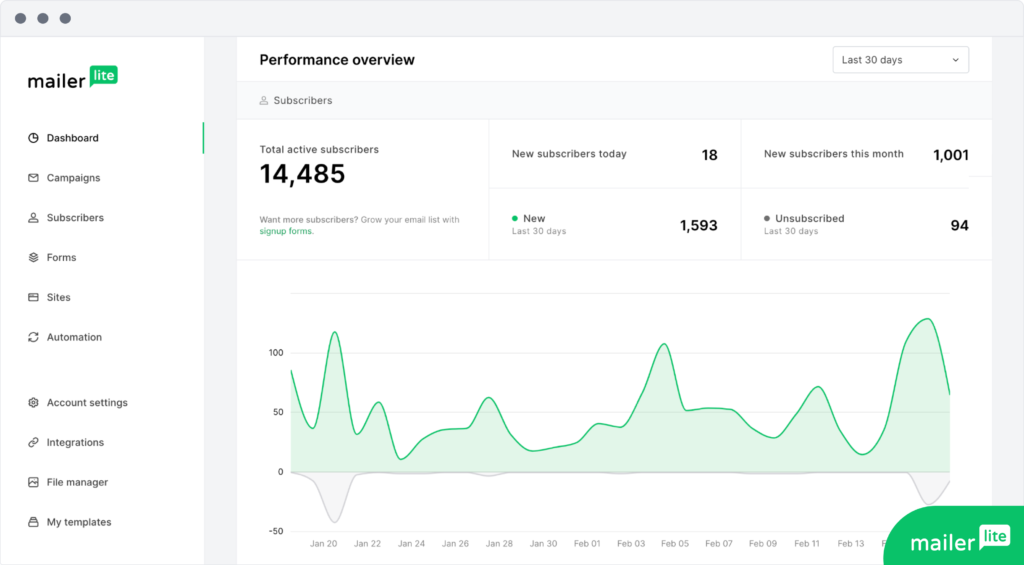
ConvertKit vs MailerLite: Email Deliverability
When it comes to email marketing, getting your messages into your subscribers’ inboxes is key. That’s where email deliverability comes into play. In this section, we’ll break down what email deliverability is, why it’s important, and how ConvertKit and MailerLite stack up in this crucial aspect.
What is Email Deliverability?
Alright, let’s break it down. Email deliverability is basically the ability of your emails to actually land in your subscribers’ inboxes, rather than getting lost in the dreaded spam folder. It’s like making sure your letter actually gets delivered to your friend’s mailbox, instead of getting lost in the postal system.
Why is Email Deliverability Important?
Think about it this way: you spend time crafting the perfect email, hit send, and… crickets. Your email never reaches your audience because it got snagged by spam filters or blocked altogether. Not cool, right? Good email deliverability ensures that your messages actually reach the people you’re trying to connect with, improving your chances of engagement and conversion.
ConvertKit:
ConvertKit takes email deliverability seriously. They use industry best practices to ensure that your emails have the best chance of reaching your subscribers’ inboxes. Plus, they provide tools and resources to help you maintain a healthy email list and avoid common pitfalls that can hurt deliverability.
MailerLite:
Similarly, MailerLite places a strong emphasis on email deliverability. They have built-in features and safeguards to help you maintain high deliverability rates, such as automatic bounce handling and spam complaint monitoring. Plus, they offer resources and support to help you improve your sender reputation over time.

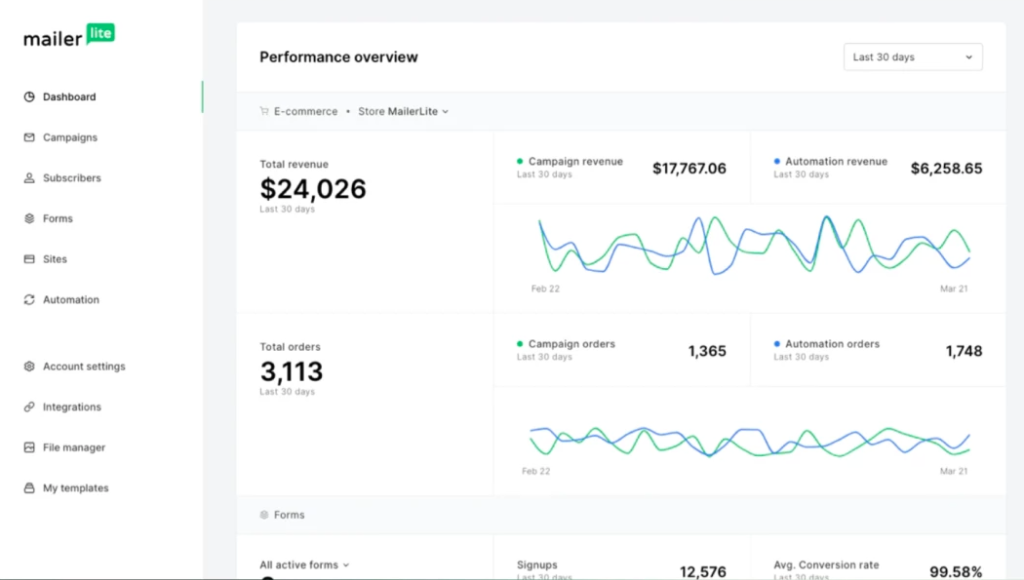
Remember to keep the images relevant and engaging, helping to reinforce the importance of email deliverability and the strengths of ConvertKit and MailerLite in this area.
Alright, now you’re armed with the basics of email deliverability and how ConvertKit and MailerLite tackle this critical aspect of email marketing. Let’s move on to the next comparison point!
Integration Options
When it comes to choosing an email marketing platform like ConvertKit or MailerLite, one crucial factor to consider is their integration options. These integrations can significantly enhance your workflow by connecting your email marketing efforts with other tools and services you already use. Let’s dive into the integration options offered by both platforms.
ConvertKit offers a range of integrations with popular tools and platforms across various categories. Whether you’re looking to connect with your favorite e-commerce platform, CRM system, or webinar software, ConvertKit has got you covered. Some notable integrations include Shopify, WooCommerce, WordPress, Zapier, and more.
On the other hand, MailerLite also provides a robust set of integrations to streamline your email marketing efforts. From e-commerce platforms like Shopify and BigCommerce to CRM systems like Salesforce and HubSpot, MailerLite offers seamless connectivity. Additionally, MailerLite integrates with Zapier, allowing you to connect with over 2,000 apps and automate your workflow effortlessly.
Both ConvertKit and MailerLite understand the importance of integration flexibility, empowering users to leverage their favorite tools to enhance their email marketing campaigns. Whether you’re managing customer relationships, analyzing data, or automating tasks, these integrations make it easier to achieve your goals.
Customer Support
When it comes to choosing between ConvertKit and MailerLite, one crucial aspect to consider is the quality of customer support. After all, you want to know that you’ll have a helping hand whenever you encounter a snag or have a burning question.
ConvertKit: They pride themselves on offering top-notch customer support. Whether you’re a seasoned pro or just dipping your toes into the world of email marketing, ConvertKit’s team is there to lend a helping hand. You can reach out to them via email or live chat, and they’re known for their prompt and friendly responses. Plus, ConvertKit provides extensive documentation and resources to help you troubleshoot on your own if you prefer a more DIY approach.
MailerLite: Similarly, MailerLite understands the importance of providing excellent customer support. They offer various channels for assistance, including email, live chat, and a comprehensive knowledge base. Their support team is known for being knowledgeable and responsive, guiding users through any issues they may encounter. Additionally, MailerLite provides video tutorials and webinars to help users make the most of their platform.
Customer Reviews and Satisfaction
deciding between ConvertKit and MailerLite, hearing what real users have to say can be a game-changer. Let’s dive into the customer reviews and satisfaction for both platforms to help you make an informed choice.
ConvertKit:
ConvertKit has garnered a loyal following among bloggers, content creators, and online entrepreneurs. One of the standout features praised by users is its simplicity and ease of use, making it a favorite for those who prefer a straightforward approach to email marketing. Many users appreciate ConvertKit’s focus on building relationships with subscribers rather than just sending out promotional emails. Plus, the customizable automation features have been a big hit, allowing users to create tailored email sequences effortlessly.
In terms of satisfaction, ConvertKit users often rave about the responsive customer support team. Whether you’re facing a technical issue or need guidance on setting up your email campaigns, ConvertKit’s support staff is known for their helpfulness and quick response times. This high level of support has undoubtedly contributed to the platform’s overall positive feedback from users.
MailerLite:
MailerLite has also gained popularity among small businesses, freelancers, and startups for its user-friendly interface and budget-friendly pricing. Users often highlight the drag-and-drop editor as a standout feature, making it easy to create visually appealing emails without any design skills. Additionally, MailerLite’s extensive library of email templates caters to a wide range of industries and campaign types, further enhancing user satisfaction.
When it comes to customer reviews, MailerLite consistently receives praise for its excellent deliverability rates. Users report that their emails are more likely to land in subscribers’ inboxes rather than getting lost in spam folders. This reliability in email deliverability has earned MailerLite a strong reputation among email marketers looking to maximize their reach and engagement.
Conclusion of ConvertKit vs MailerLite
In the showdown between ConvertKit and MailerLite, both platforms offer robust features and cater to the needs of email marketers in different ways. Whether you prioritize simplicity and relationship-building like many ConvertKit users, or you lean towards user-friendly design and deliverability like MailerLite enthusiasts, there’s a solution for everyone.
Ultimately, the best choice depends on your specific goals, preferences, and budget. Before making a decision, consider factors such as pricing, features, ease of use, customer support, and user satisfaction. Take advantage of free trials or demos offered by both platforms to get a hands-on experience and see which one aligns best with your needs.
Remember, the success of your email marketing efforts doesn’t solely rely on the platform you choose but also on the quality of your content, strategy, and relationship with your audience. Whichever platform you opt for, focus on delivering value to your subscribers, building meaningful connections, and continually refining your approach based on data and feedback.
Ultimately, whether you choose ConvertKit or MailerLite, you’re taking a step towards growing your business and connecting with your audience on a deeper level through email marketing. So, weigh your options, trust your instincts, and embark on your email marketing journey with confidence.
If you found this comparison helpful, feel free to share it with others who might be navigating the same decision. And remember, no matter which platform you choose, success in email marketing is within reach with dedication, creativity, and a commitment to delivering value to your subscribers.
Thank you for joining us on this exploration of ConvertKit and MailerLite. Here’s to your email marketing success!

